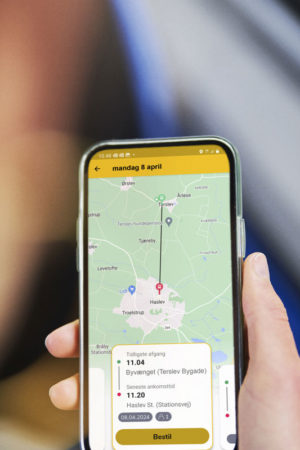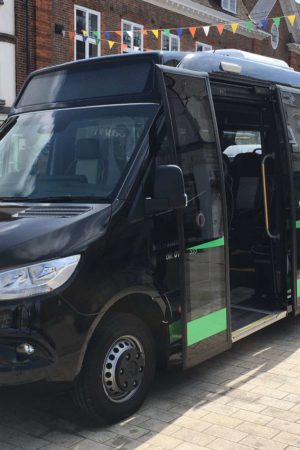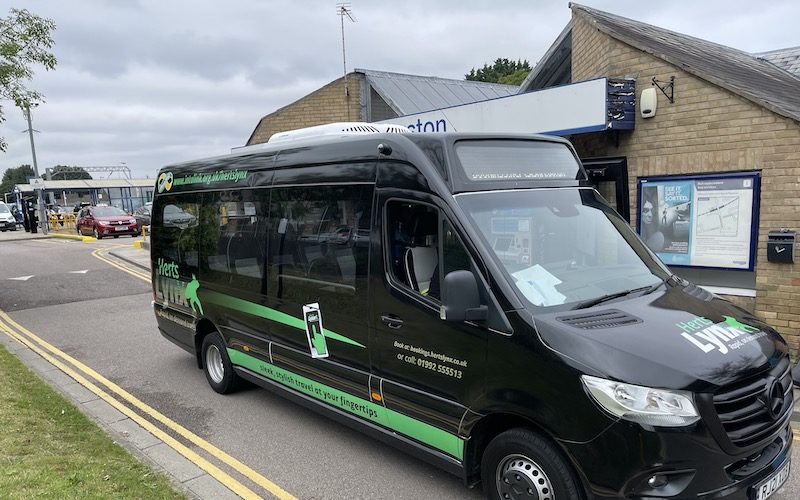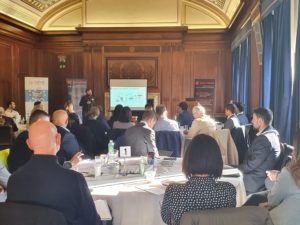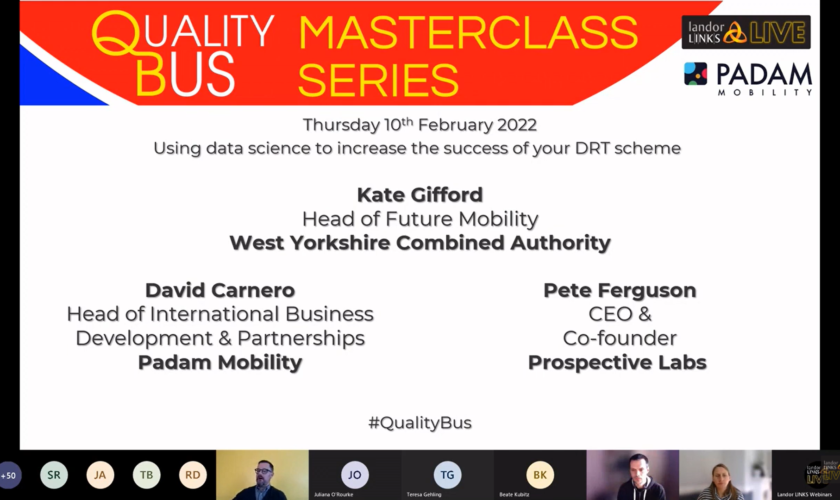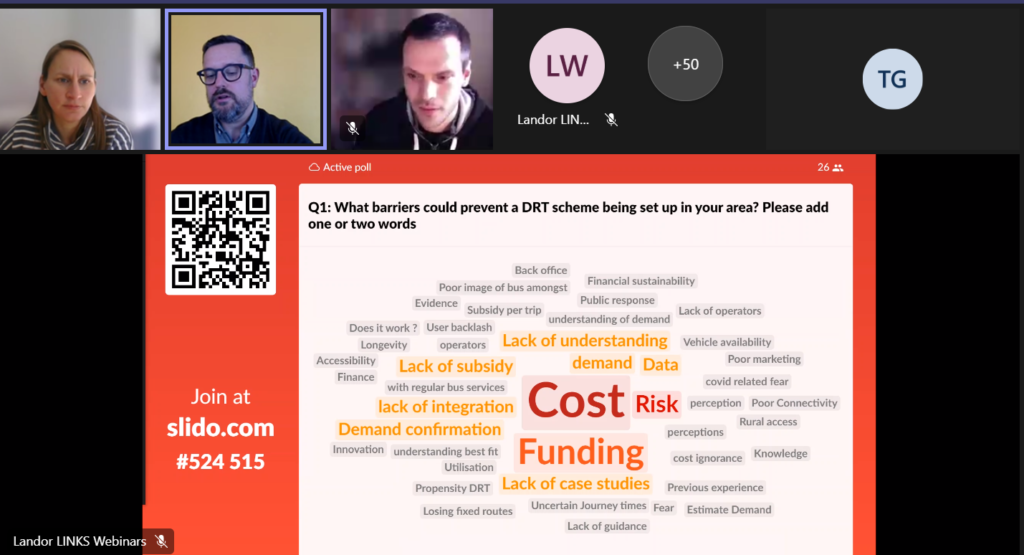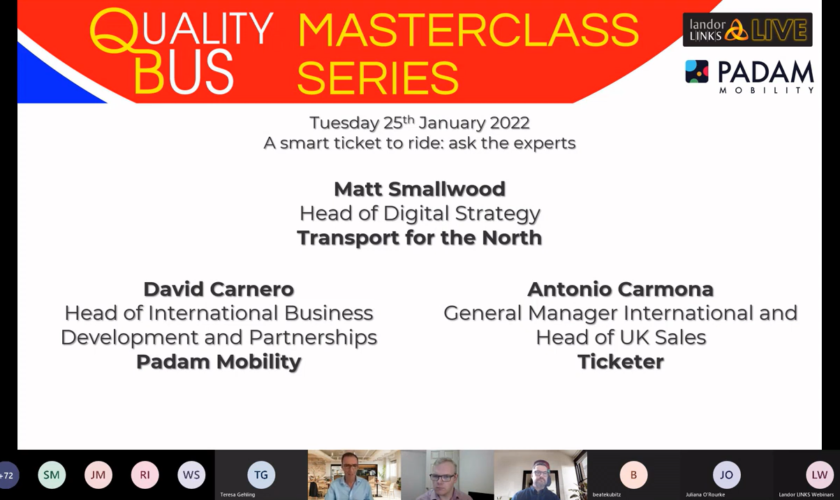HertsLynx is a new DRT service launched in September 2021 with three buses covering villages in the rural area surrounding the market town of Buntingford in Hertford. The HertsLynx zone extends between 7 and 9 miles in each direction from the town, serving a total area of around 150 miles² / 400km². The service is operated by Uno Bus, which runs fixed route buses across Hertfordshire. It is the first DRT service Uno Bus has run.
With just over 6 months in operation, patterns are beginning to emerge. Although in-depth data analysis is just beginning, we were able to catch up with Ed Cameron, Commercial Manager at Uno Bus to find out things were going.
It’s a remote and sparsely populated area, and some of the villages covered consist of only 30-40 houses, so there’s no sustainable way to run a fixed line route.”
Getting new people onto buses
There have been few surprises, as the usage patterns have followed expectations that people want to travel between villages and the towns or to get to and from stations. There’s been an acceleration of use by students though:
We also pick up quite a number of school and college students. There is a big college in the north of Buntingford. The service launched after the start of term and it took a month for a couple of students to start using it. Then it grew and we’re seeing 10-12 daily. These are students that might have had to get a lift to school previously.”
Not just a taxi
DRT is an interesting product. There are just three buses at the moment covering a big geographical area. The challenge is to maximise the number of people getting the bus together so that it’s not just a taxi service. What we’re starting to find is that there are 2, 3, 4 and 5 people getting the bus together. This is sometimes people coordinating trips but also it’s down to the system prompting people. So, for example, if someone is asking to book a trip at 2 pm and there’s someone else travelling at 2.15 pm the system will suggest that journey. This is where DRT has the opportunity to grow. We also see it if someone is making a long trip, the system will map the route to pick up and set down other people along the way.
The other pattern is that, over the last couple of months, more people are booking 3-4 weeks in advance. Ed Cameron sees this as part of a learning curve the passengers have been on, as regular passengers realise that they can be sure to get to college or catch their train if they book in advance.
A lot of people had no idea of what DRT was when it started. We ran a lot of road shows but it’s quite hard to explain that it’s both like a taxi but also not as bespoke and like a bus but not quite. I have passengers asking why they have to stand on different sides of the road one day to the next. I have to explain that it depends on the bus’s previous route. However, once they’ve used it a few times people get the hang of it quite quickly and I think that’s why they book in advance, and also why the buses are fuller.”
What’s next?
The RMF funding is for 4 years, and includes growth from 3 to 5 buses planned for September 2022. According to Ed, demand for the service continues to grow:
We found DRT works really well in this kind of remote area where bus services are not sustainable, and also for the last mile between train stations and homes a couple of miles away. We see this as a potential opportunity.”
The HertsLynx service has proven successful. County-wide, DRT will grow rapidly and by January 2023 Hertfordshire will have over 20 DRT vehicles in operation.
Key facts
• HertsLynx is designed to serve residents in the designated operating zone covering villages in North and East Herts, as well as providing transport links to fixed destinations in Key Hub Towns: Stevenage,
Letchworth, Hitchin, Baldock, Royston and Bishop’s Stortford.
• Passengers can use HertsLynx for travel anywhere in the Free-Floating Operator Zone. There are no fixed routes on this service, instead passengers can be picked up and dropped off at a vast number of stops within the zone. They are also able to travel from the Free-Floating Operator Zone to designated locations in the Key Hub Towns. Travel is permitted between Key Hub Towns but is not available for journeys between points within one Key Hub Town.
• HertsLynx launched with three 13 seater minibuses plus one space for wheelchair user. New zones and types of DRT, with additional buses, are planned for May and September 2022. The service operates 7 am – 7 pm Mondays to Saturdays and 10 am to 4 pm on Sundays and Public
Holidays. Journeys can be booked in real-time or in advance for future journeys.
• Fares are based on distance travelled, from £2 (up to 2 miles) to £5 for over 10 miles. Concessionary pass holders travel for free and Saver Card holders for half fare and HertsLynx runs as a cashless service.
• The service was funded by the Rural Mobility Fund of the Department for Transport.
• The operator is Uno Bus, using the Padam Mobility DRT platform.
Click here to visit the service’s website
This article might interest you: With HertLynx, Padam Mobility continues its expansion in the UK
Find out more about Padam Mobility


